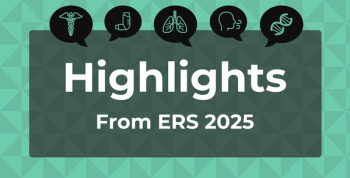
Is the Health System Prepared for Broad CGT Adoption? Payers Say No
Key Takeaways
- Payers acknowledge CGTs' potential but highlight high costs and uncertain long-term outcomes as significant challenges to adoption.
- Stop-loss coverage, risk pools, and outcomes-based agreements are seen as viable risk management strategies for CGTs.
Payers cited high upfront costs, long-term uncertainty, and narrow coverage criteria as factors continuing to limit access and reimbursement innovation.
As the number of cell and gene therapies (CGTs) grows, payers acknowledge their potential to transform treatment for rare and chronic diseases. However, they argue that
In a 2025 qualitative analysis of payer insights conducted by McKesson and Lumanity, 20 payers representing nearly 280 million covered lives reported that although they broadly view CGTs as safe (90%) and efficacious (80%), 95% of them agreed that the US health care system is not prepared for widespread adoption.1
The most frequently cited challenges were the therapies’ high upfront costs and uncertainty about long-term outcomes. Payers noted that these economic and operational pressures make it difficult to balance patient access with financial sustainability.
To mitigate these risks, payers ranked stop-loss coverage as the most viable risk management strategy, followed by risk pools and outcomes-based agreements. However, the study found that “member portability” and the difficulty of tracking patients long-term were major barriers to implementing innovative payment models.
Coverage decisions varied widely but typically aligned with clinical trial criteria and FDA labeling. Still, utilization management remained stringent, often requiring prior authorization processes that mirror trial inclusion and exclusion criteria. The authors concluded that greater collaboration among payers, providers, manufacturers, and policymakers will be critical to address these access and reimbursement barriers.
“Addressing these barriers will require collaboration among payers, providers, manufacturers, and policymakers to ensure effective CGT integration into managed care,” they said.
Coverage for CRISPR-Based Gene Therapy
A separate analysis of payer coverage policies for exagamglogene autotemcel (Casgevy) found that despite the therapy’s clinical promise, access remains tightly constrained.2 Exagamglogene autotemcel is the first CRISPR-based gene therapy approved for sickle cell disease (SCD) and transfusion-dependent beta-thalassemia (TDT).
In a systematic review conducted by researchers at Massachusetts College of Pharmacy and Health Sciences, they analyzed 28 payer policies across Medicaid,
For SCD, most payers required at least 2 vaso-occlusive crises per year, hospitalization history, and failure or contraindication to hydroxyurea. For TDT, transfusion thresholds ranged from 8 to 12 units per year. Nearly all payers (93%) limited patients to a single lifetime dose, and 71% required treatment at certified gene therapy or transplant centers.
All coverage frameworks included rigorous prior authorization steps, often requiring genetic confirmation and review by a disease specialist. Medicaid programs showed early engagement with the Cell and Gene Therapy Access Model, launched in January 2025, while several commercial payers reported piloting outcomes-based or milestone-based contracts.
Despite these emerging models, uptake remains limited, as only 40 to 50 patients in the US had initiated treatment with exagamglogene autotemcel as of early 2025. Researchers noted that coverage for this treatment remains highly restrictive due to a number of factors.
“Narrow criteria, constrained capacity, and uneven payment model adoption continue to limit access,” the authors concluded. “Broader implementation will require coordination between payers and providers, expanded site readiness, and more consistent reimbursement approaches.”
Not a New Conversation
These payer analyses
Based on input from more than 100 stakeholders, the report found that more than half cited inadequate reimbursement and high acquisition costs as key challenges, while others pointed to restrictive prior authorization requirements and limited treatment infrastructure. As Fran Gregory, PharmD, MBA, vice president of Emerging Therapies at Cardinal Health, noted, “We’re still in the very early stages of the incredibly promising CGT industry,” and meaningful progress will require collaboration among payers, manufacturers, and providers to create scalable, value-based access solutions.
References
- Pittos E, McCullough T, DePinto J. Integrating cell and gene therapies into managed care: an analysis of US payer insights. Presented at: AMCP Nexus; October 27-30, 2025; National Harbor, MD.
- Matter A, Wong Z. Payer policies and access restrictions for CRISPR-based gene therapy in sickle cell disease and beta-thalassemia: a systematic review of US coverage frameworks. Presented at: AMCP Nexus; October 27-30, 2025; National Harbor, MD.
- McNulty R. CGTs have potential to transform care, but challenges persist. AJMC®. May 14, 2025. Accessed October 28, 2025.
https://www.ajmc.com/view/cgts-have-potential-to-transform-care-but-challenges-persist
Newsletter
Stay ahead of policy, cost, and value—subscribe to AJMC for expert insights at the intersection of clinical care and health economics.













































